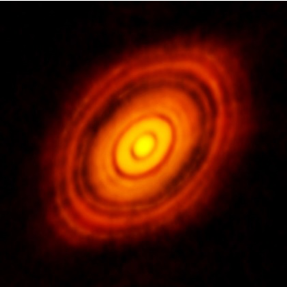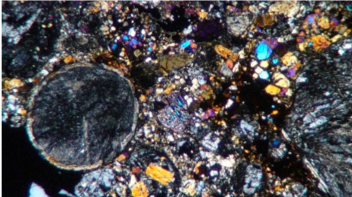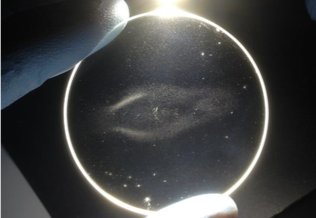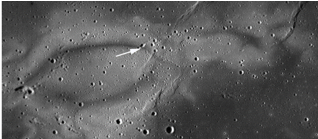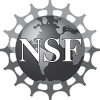Cosmic Dust
The presence of dust particles in the cosmic environment is a key factor in the formation of many astrophysical objects, including planets, moons, and comets. In addition, cosmic dust particles are some of nature’s most powerful detectors of electric and magnetic fields throughout the universe. For example, cosmic dust particles close to the center of the Milky Way’s massive black hole are charged and align perpendicularly to the galaxy’s magnetic field lines. Detection of light emitted from these dust grains is used by astronomers to map the properties of the magnetic field, helping to understand the fundamental forces holding our galaxy together.
Another challenging topic in cosmic dusty research is understanding the interaction of dust particles and the solar wind on the surface of airless (or thin-atmosphere) bodies, which is key for establishing human settlements on the Moon and Mars. Researchers at CASPER explore these topics using various numerical simulations and experimental analogues of cosmic dust phenomena.
Protoplanetary Development
Data from Hubble and ALMA telescopes suggest that formation of planets from the cloud of gas and dust orbiting a new protostar is an efficient process occurring on a time scale of less than 10 million years. Initially uncharged grains in space and laboratory plasma environments become charged due to collection of ions and electrons from the plasma or emission of electrons as high-energy particles are absorbed. Certain macroscopic effects such as coagulation of smaller grains into larger fluffy aggregates are then affected by the grain charge. The charge distribution on the aggregate structure itself appears to play a role in determining the coagulation rate for the dust population. As particles collide, a numerical code can be used to determine the effect of the charge distributions on the ‘fluffiness’ of the dust aggregates, the coagulation rates of the particles, and the evolution of the dust population.
Faculty & Staff: Augusto Carballido, Lorin Matthews, Truell Hyde
Background Literature
CASPER Papers
Structure of Chondrule Rims
Fine-grained dust rims (FGRs) around sub-millimeter-sized chondrules are believed to have formed in the solar nebula, acting as a “glue” that enables chondrules to stick together. The properties of these FGRs (including porosity, thickness, and dust grain alignment) contains critical information about the dynamics of the solar nebula. In this project, CASPER scientists investigate the connection between FGRs observed in chondrites and the nebular conditions during FGR formation, including turbulence, grain charge, and grain shape. The results from this study are compared to laboratory measurements and will provide critical information needed to improve current models of asteroid and planetary formation.
Faculty & Staff: Augusto Carballido, Lorin Matthews, Truell Hyde
Collaborators: Romy Hanna (UT Austin)
Background Literature.
CASPER Papers.
Dust on Airless Bodies
Lunar dust, being both scientifically interesting and potentially hazardous, is becoming the principal and energizing science for upcoming lunar missions and the applications of lunar findings to future Mars exploration. In this project, CASPER researchers design experimental dusty plasma analogues for cosmic dust phenomena on airless (or thin atmosphere) bodies. One example of interest is the formation of lunar swirls, or patterns of high albedo on the lunar surface that are found in the vicinity of strong magnetic anomalies. It has been hypothesized that the formation of lunar swirls results from the interactions of the lunar plasma environment with the local magnetic fields, which creates these patterns either by shielding the surface from the solar wind or by transportation of fine dust. Scientists in the Dusty Plasma Lab designed small scale models of the magnetic fields found at the Reiner Gamma and Airy formations on the Moon using multiple dipole magnets. Using these models, they reproduced dust patterns resembling the Lunar swirls.
Faculty & Staff: Truell Hyde, Lorin Matthews, Jie Kong, Ke Qiao, Jorge Carmona Reyes, Kenneth Ulibarri, Mike Cook
Background Literature
CASPER Papers
